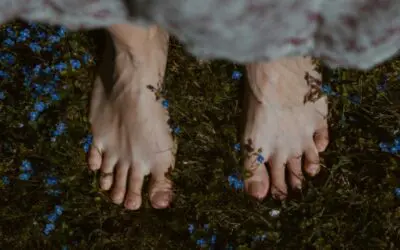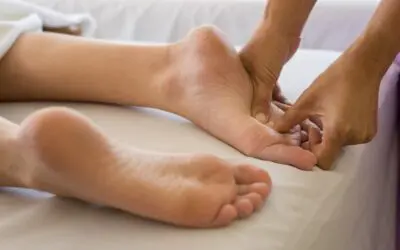Runners may wear their black toenails as badges of honor, an homage to the many miles they have put into their training. However, black toenails can occur for various reasons, ranging from trauma to underlying medical conditions.
If your black toenail results from something other than training for a half-marathon, you might need additional intervention to help your toenail heal.
Here’s an overview of how to identify and treat the sources of black toenails:
Identifying the Source of Black Toenails
1. Trauma
Stubbing your toe, dropping something heavy on your foot, or repetitive friction (such as constant rubbing from ill-fitting shoes) can cause blood to pool under the toenail, resulting in a blackened appearance.
Trauma-blackened toenails will result in a sudden discoloration of the toenail, pain or discomfort, swelling, and possibly a throbbing sensation.
Initially, you should apply ice to reduce swelling and elevate the affected foot. If pain is severe or there’s concern about the extent of injury, consult a podiatry office. In some cases, a medical professional may need to drain the area beneath the toenail to relieve pressure and allow new nail growth.
2. Fungal Infections
Fungal infections like onychomycosis can cause toenails to become discolored, thickened, and brittle over time. In advanced stages, nails may turn black or dark brown.
Symptoms of a fungal infection include discoloration starting at the edge of the nail, thickening, crumbling, and possibly a foul odor. The nail may separate from the nail bed in severe cases.
Toenail fungus treatment includes antifungal medications, either topical or oral, prescribed by a healthcare provider. Maintaining good foot hygiene, wearing breathable socks and shoes, and keeping nails trimmed can help prevent recurrence.
3. Runner’s Toe (Subungual Hemorrhage)
Long-distance running or sports activities that repeatedly stress the toes can lead to black toenails due to blood vessels bursting beneath the nail.
Runner’s toe is characterized by a gradual onset of dark discoloration under the toenail, usually without pain unless there is associated trauma. The affected toenail may eventually fall off if enough blood pooled underneath the nail (a process called avulsion), with a new one eventually regrowing in its place.
To treat a subungual hemorrhage, rest the affected foot, wear properly fitted shoes with adequate toe room, and ensure you trim your toenails straight across to prevent further trauma. If pain or discomfort persists, seek a medical evaluation.
4. Melanoma or Skin Cancer
In rare cases, dark spots or discoloration under the toenail can be a sign of melanoma or other forms of skin cancer.
Skin cancer under the nail would present itself as persistent darkening or changes in nail color, irregular growth patterns, and potentially a dark streak that extends beyond the nail bed.
If you think you may be experiencing skin cancer under or around your toenail, schedule an immediate consultation with a dermatologist or healthcare provider for a thorough examination and possibly a biopsy to rule out melanoma or other skin cancers. Early detection is crucial for effective treatment and prognosis.
General Tips for Treatment and Prevention of Blackened Toenails
Rest and Elevation
If the black toenail is due to trauma, rest the foot and elevate it to reduce swelling.
Ice Pack
Apply an ice pack wrapped in a cloth to the affected area for 15 to 20 minutes every few hours during the first 48 hours.
Proper Footwear
Wear shoes that fit properly and provide adequate support, especially during physical activities. A good rule of thumb for shoes where you will be exercising is to go up a half size to account for any swelling that may occur while you are working out. Choose shoes with a wide toe box to allow for adequate foot function.
Trimming Nails
Keep toenails trimmed straight across to prevent ingrown nails and minimize the risk of trauma.
Hygiene
Maintain good foot hygiene, including regular washing and drying between toes to prevent fungal infections.
Medical Evaluation
Seek medical advice from a podiatrist in Nevada if the black toenail is persistent, accompanied by severe pain, or associated with other symptoms like drainage, fever, or signs of infection. If you’re on the fence about seeking medical attention, stay on the safe side and get it checked out.
Black toenails can result from various causes, including trauma, fungal infections, repetitive stress, or, rarely, serious conditions like melanoma. Identifying the underlying cause is essential for appropriate treatment and prevention strategies.
Whether managing through home care or seeking professional medical advice from a foot and toe clinic, prompt attention can help alleviate discomfort, prevent complications, and promote healthy toenail growth.



